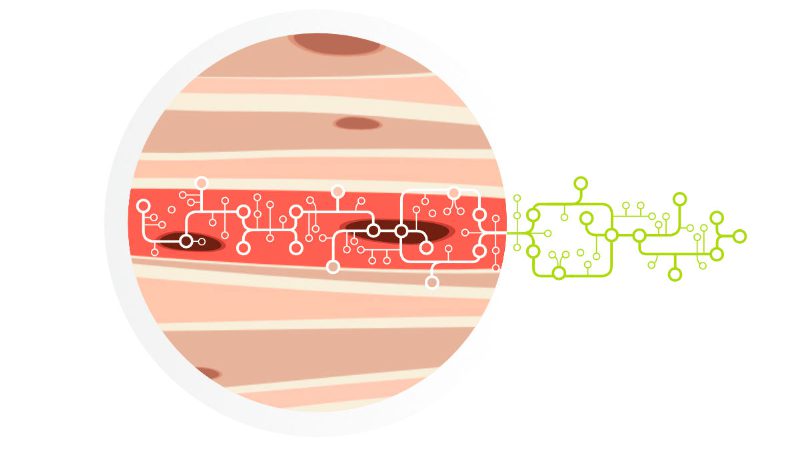Optimization of coating proteins for medicine, pharma and cultivated meat. Coating proteins are part of the extracellular matrix (ECM) and are widely used in the pharmaceutical industry, medicine, and research to improve the adhesion of mammalian cells to surfaces/tissues in vivo and in vitro. Of the several hundred ECM proteins, only a few proteins are widely used for coating, with little research into their optimization.
Background
Technology
Coating proteins show strong differences in adhesion efficiency, which also depends on the cell type. So far, apart from some truncated variants, no further attempts have been made to optimize the coating proteins. This is undoubtedly due to the limitations of classical protein engineering approaches and the need to purify each variant in cell culture prior to bioactivity testing, which has so far severely limited the number of protein variants that can be studied. In addition, during protein purifications, product loss or denaturation can easily occur. acib’s purification-free approach, based on high-throughput monitoring of mammalian cell proliferation, circumvents this limitation. Not only does the elimination of purification save time and money and allow direct assessment of the biological activity of mutant variants, but it also enables screening of larger libraries, greatly facilitating protein engineering experiments. This system can be used to screen mutant libraries of known coating proteins – such as fibronectin, fibrinogen, collagens, vitronectin, and laminin – for more efficient adhesion, as well as adhesins from non-pathogenic symbiotic bacteria known for their function in attaching to host cells. Mutant libraries containing truncated proteins, fusions, and repeats, as well as libraries based on the directed evolution approach, will be screened for higher adhesion rates in vitro on preadipocytes and muscle stem cells. Higher stability and suitability for expression in low-cost expression hosts will be one of the main goals of optimization. The efficiency of several best variants will be confirmed in vivo using an appropriate mouse model. The best variants, after additional optimization, can then be expressed in larger quantities for further applications from the same expression strains produced for screening.
Offer
The platform needs further 2-3 years for the development, during which the first generation of optimized coating proteins will be produced. We are looking for partner(s) to bridge the current gap (financing demand of 300,000 – 500,000 € in total). Potential partners will not only benefit from getting privileged early access to this unique technology, but also through joint IP-ownership.
Experts:
Aleksandra Fuchs, Assoc.Prof. Dr. Harald Pichler, Assoc.-Prof. Dr. Petra Kotzbeck, Univ.-Prof. Dr.med. Lars-Peter KamolzAvailable for:
Joint Research Project, Contract Research, Funding

